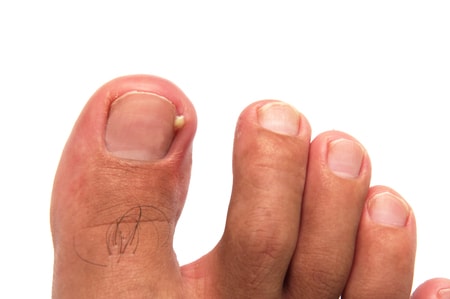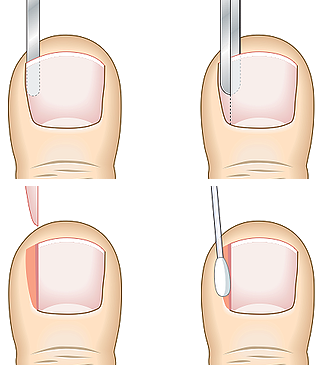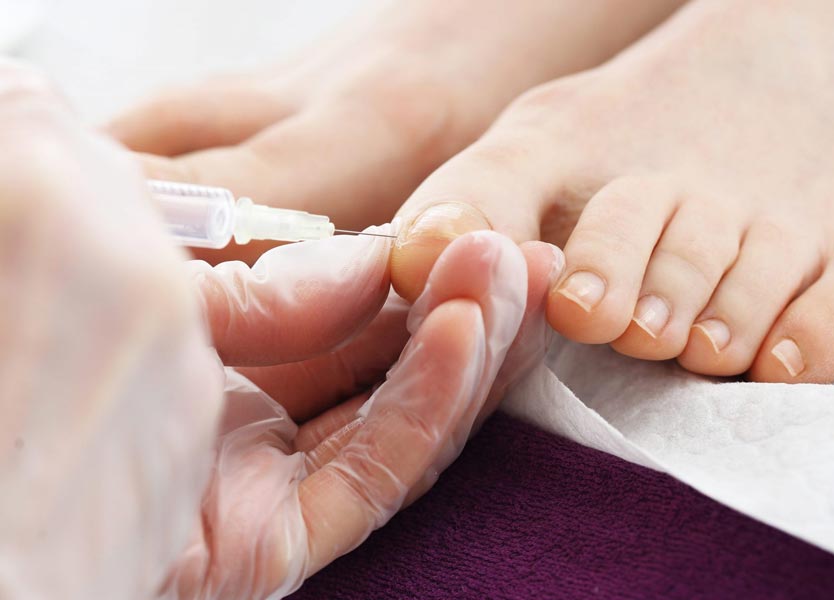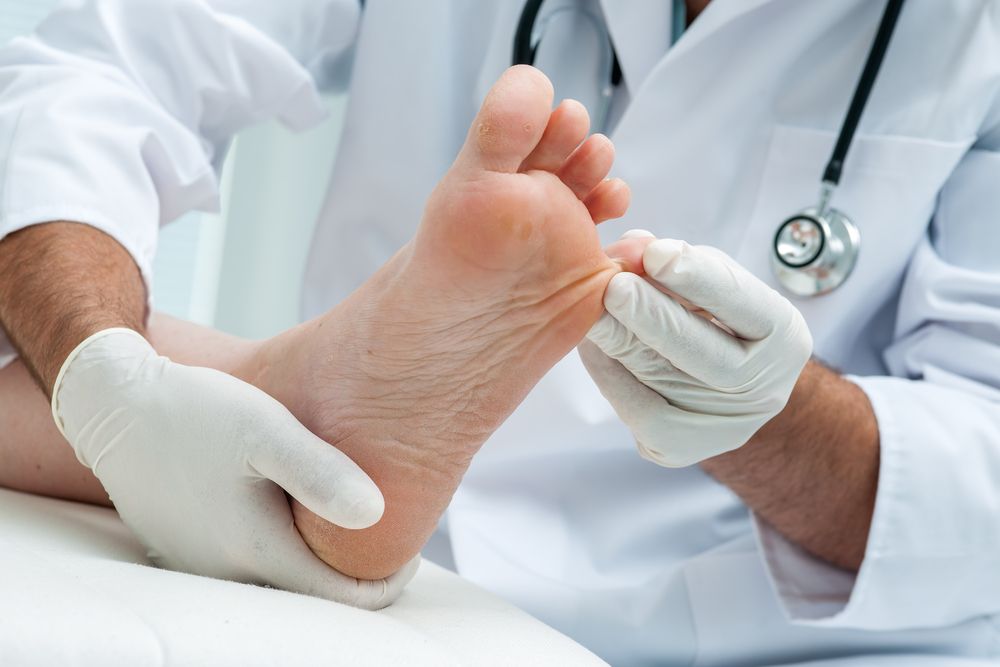Ingrown nails

About ingrown nails
An ingrown nail occurs when the nail edge grows into and pierces the skin. Predisposing factors such as a thickened nail, incorrect cutting, poor footwear, kicking or stomping on the nail, curved nail, wart or corn under or in-between the nail bed and nail can lead to an ingrown nail.
But don't worry, our podiatrists are here to help, whether it may be with a conservative treatment plan or a Partial Nail Avulsion.
Conservative treatment
Conservative treatment is our first approach. This involves the removal of the causing nail spicule from the toes edge, significantly reducing pressure and pain. If this is not done, the problem just doesn’t simply sort itself out or go away. If there is an infection present, which is very common, it is swiftly dealt with.
The inflammatory response your body creates - caused by the ingrown - is the body's reaction in efforts to expel the nail spicule. Once the nail spicule is removed, any inflammation, swelling or pain is immediately reduced.
Last but not least we need to determine the cause of the ingrown, in hope to prevent it from reoccurring in future.


Partial Nail Avulsion surgery
If conservative treatment doesn’t address the problem a surgical procedure called a Partial Nail Avulsion (PNA) is offered and considered. Its long term management aims to treat and the nail spicule permanently.
The procedure itself is painless and performed in clinic. Through the use of local anaesthetics, the toe is numbed making the procedure painless. The causing nail spicule is removed down to the nail matrix, extracted and then cauterised through phenolisation. This prevents only the small portion of the nail removed from growing again.
This surgery has a 95% success rate, meaning only 5% of patients experience regrowth of the nail. The total surgery time is approximately an hour to ensure a sterile and safe environment is maintained, with extra time with the clinician post surgery to ensure the patient is feeling comfortable and ready to return home.
PNA surgeries are generally well tolerated by patients, skin is not being cut and stitches aren’t used to close the wound, there is minimal pain post surgery. The wound is generally completely healed within a month, given no complications are experienced.
Pre-operative checks such as medical history, medication list checks, for the possible need to change the list temporarily, in correspondence with your GP. Example antibiotic therapy commencement or blood thinner medication reduction. This is to ensure the PNA surgery has a higher chance of success.
If you are considering a PNA please speak with one of our podiatrists.
Book an appointment now
OUR PODIATRISTS





